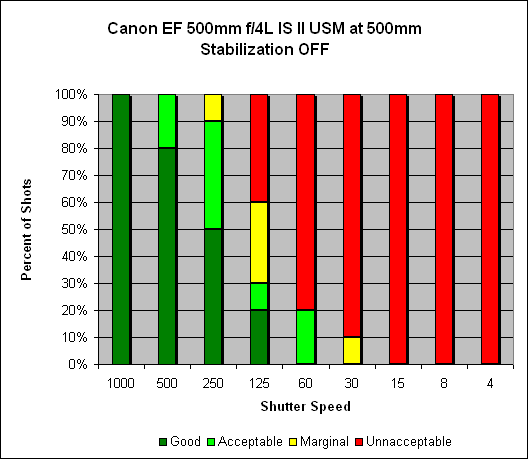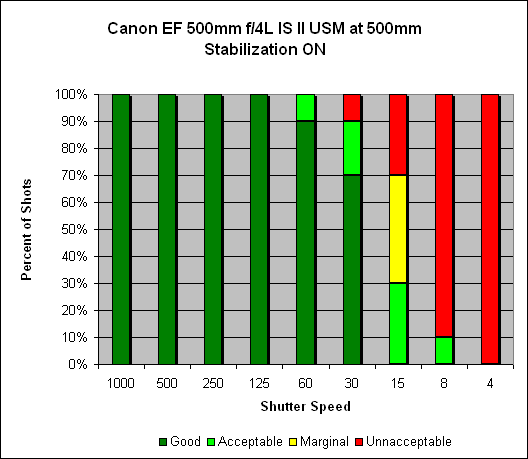Most people tend to think of image stabilization as being mainly for telephoto lenses. While it's true that their longer focal lengths tend to magnify the effects of camera shake, image stabilization can provde a very useful assist at wider angle focal lengths as well; anyone who's ever tried to blur the image of a waterfall, while keeping the surrounding landsape tack-sharp knows exactly what I'm talking about.
With the Canon 1Ds mk III camera attached, shooting with the 500mm ƒ/4 lens represents holding over ten pounds of camera in your hands, with most of that weight projected over two feet in front of you; it's not a situation you will want to find yourself in for the long haul. That said, without image stabilization activated, Rob's hand-held results are about as we might expect with the one-over-focal length rule of thumb, with 1/500s being the minimum shutter speed employable to obtain reasonably sharp images.
Turning on image stabilization produced three stops of hand-holding improvement, with consistently sharp images now being obtained at speeds of 1/125s and even 1/60s. Sharp images were even obtained at 1/30s, but in this scenario not more than 70% of the time.
 |
| Mouse over this chart to show results with IS activated. |
IS systems tend to provide more benefit to less-stable shooters than very steady ones, so most users will see the same or greater amounts of shake reduction as we measured here. You can read more about our IS test methodology here: SLRgear IS Test Methodology, v2.
